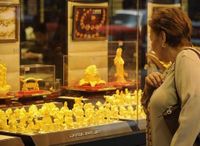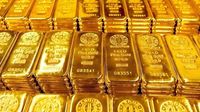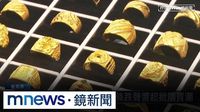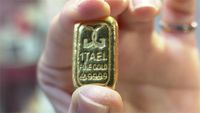Gold prices have taken a significant hit recently, largely influenced by the tariff policies enacted by former President Donald Trump. Between April 2 and April 5, 2025, the price of gold at various banks fell by more than NT$4,000 per tael, marking a turbulent period for investors and consumers alike. On April 3, 2025, gold prices surged to $3,167 per ounce, only to plummet to $3,015 by April 5, reflecting a dramatic decline in just a few days.
During this time, the price of a small gold bar dropped from NT$131,700 to NT$127,300, a decrease of NT$4,400. The fluctuations were largely attributed to the market's reaction to Trump's tariffs, which have left many investors in a state of uncertainty. According to experts, the recent downturn is indicative of a phenomenon known as "buy the rumor, sell the news," where initial optimism is quickly replaced by a stark reality.
On April 4, 2025, the spot gold transaction price reached a high of $3,167 per ounce, but following Trump's announcement of tariff exemptions on precious metals, the market's unusual premium for these assets reversed. By April 4, the price had dropped to $3,136 per ounce, and by the morning of April 5, it had fallen as low as $3,015, marking nearly a 5% drop over three days.
As concerns about the global economic implications of Trump's tariff policies grew, investors began to panic, leading to a massive sell-off of gold to mitigate losses from other declining assets. In mainland China, discussions about the sharp drop in gold prices trended on social media, with phrases like "Gold price plunges 32 yuan in 2 days" capturing widespread attention.
On April 4, 2025, spot gold fell by 2.47% to $3,037.31 per ounce, while COMEX gold futures dropped by 2.1% to $3,056.1 per ounce. Despite this decline, long lines formed outside jewelry stores like Lao Miao Gold, as customers rushed to purchase gold, taking advantage of the lower prices. Store employees noted that even with the price drop, customers had been lining up since April 3, 2025, and many popular items were sold out.
In Shenzhen, the Shuibei gold market remained bustling during the Qingming holiday, with many shoppers, including those from out of town, flocking to buy gold jewelry. The demand remained strong despite the price fluctuations, showcasing a persistent interest in gold as a safe-haven asset.
Trump's tariff policies, which he announced on April 2, 2025, included a 32% tariff on Taiwan and a retaliatory 34% tariff on U.S. goods from China. In a statement on April 5, Trump reiterated his commitment to these tariffs, asserting that China had been hit harder than the U.S. by these measures. He described the situation as an economic revolution, emphasizing the need for fairness in trade.
Market analysts have been closely monitoring the situation, with many expressing concerns about the potential for a global recession stemming from these trade wars. The recent sell-off in gold is reminiscent of past crises, such as the market turmoil during the COVID-19 pandemic in 2020, when investors also rushed to liquidate gold holdings.
In light of the recent volatility, expert opinions vary on the future of gold prices. Some analysts predict continued declines, while others suggest that if the U.S. Federal Reserve announces an interest rate cut, gold could once again attract investors. Zhang Zhenwei, an analyst from Asia Investment Consulting, noted that despite the recent downturn, gold remains a strong hedge against inflation and uncertainty.
In a recent survey conducted by GoldSeek News, analysts were split on the future of gold prices for the week of April 7-11, 2025. Out of 16 analysts, 31% expected prices to rise, while 50% anticipated further declines. Among retail investors, 61% were bullish on gold prices, reflecting a general sentiment that many still view gold as a reliable investment.
As the market grapples with these challenges, investors are urged to remain cautious. The current climate of uncertainty, driven by geopolitical tensions and economic policies, suggests that gold prices may continue to experience significant fluctuations. Analysts emphasize the importance of rational investment strategies and awareness of the risks associated with short-term volatility.
In summary, the recent decline in gold prices has highlighted the complex interplay between economic policy and market behavior. As investors navigate this landscape, the future of gold remains uncertain, but its historical role as a safe-haven asset continues to resonate with many.







